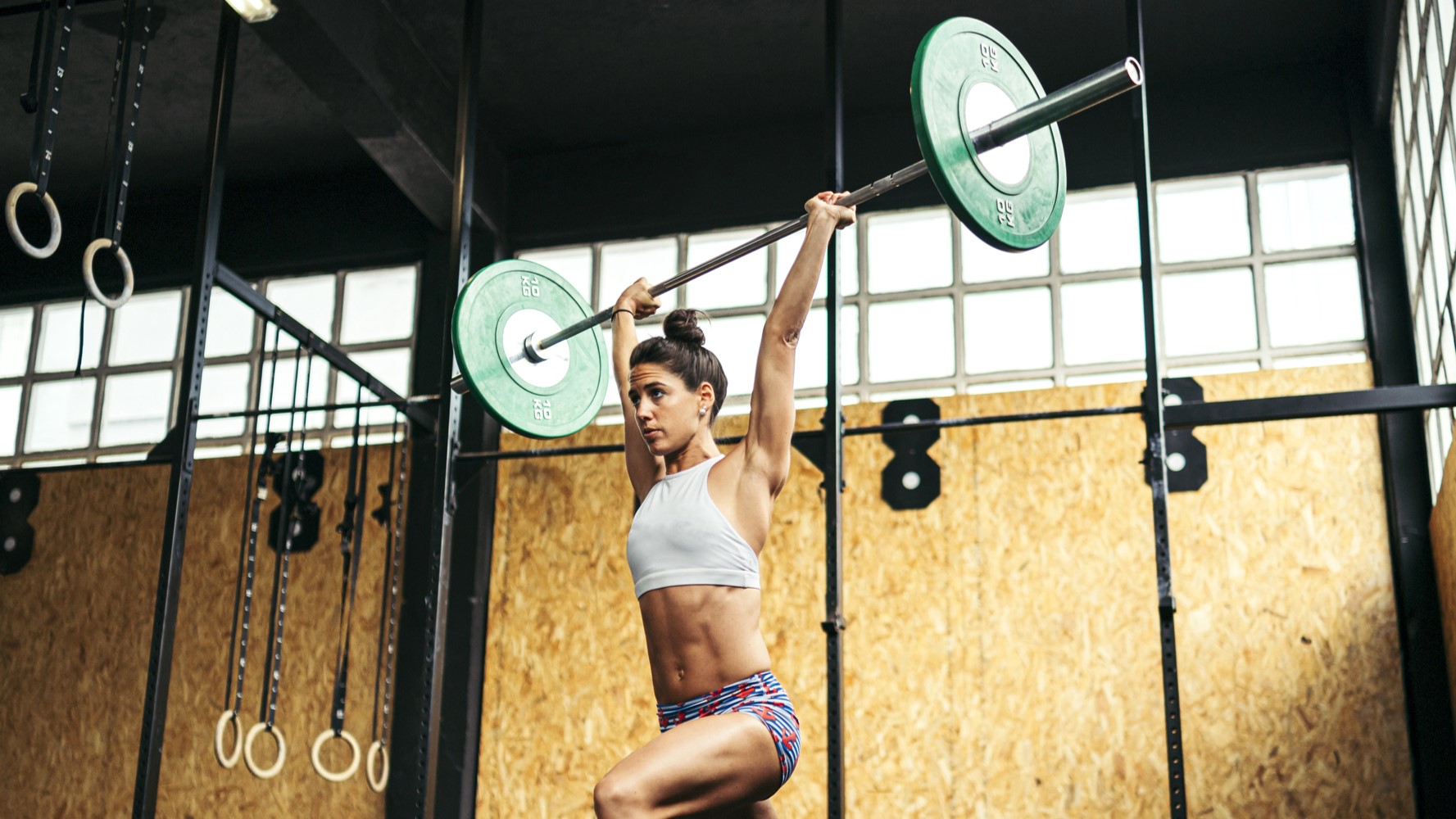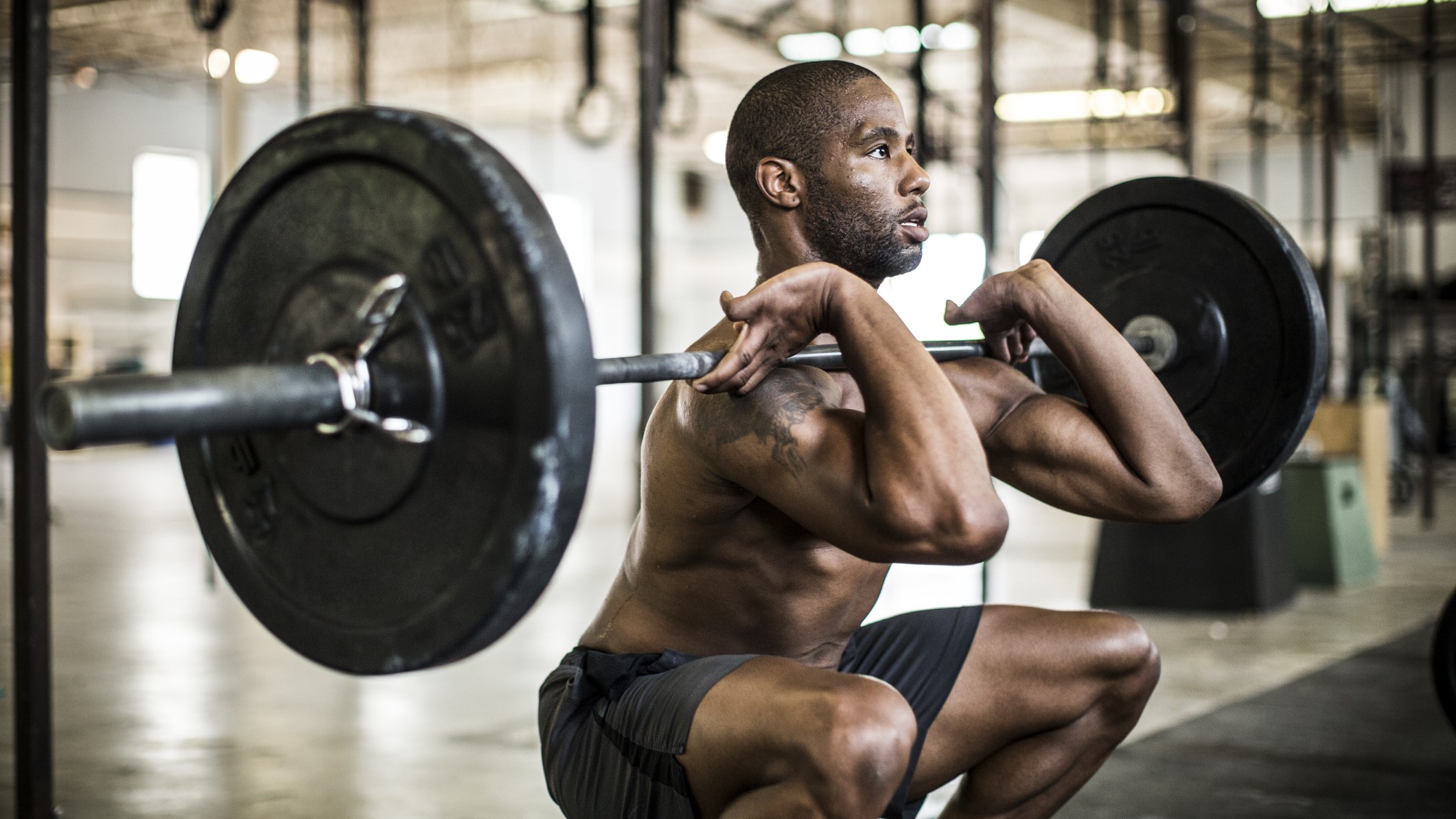7 of the best barbell exercises for building a strong core

Barbells aren’t just for bench presses, squats, and deadlifts — they’re a unique and functional tool that can help strengthen your abdominals.
While many of us long for that elusive “six pack,” aesthetics are hardly the only reason to train your core. Your abdominal muscles (like the transverse abdominis, rectus abdominis, and obliques) are responsible for stabilizing your hips, spine, and the rest of your body during any type of movement. Faster runs, heavier squats, higher box jumps, and all other athletic goals are dependent on having strong, conditioned abs to provide a solid base of support. Without sufficient core strength, you run a huge risk of injury — no matter how “in shape” you are.
So pick up a barbell and try these 7 exercises on your next ab day. Consider scheduling a session or two with a certified personal trainer to ensure your form is correct, especially if you’ve just begun a regular fitness routine.
Why add weight to your ab workouts?
When we first begin working out, many of us will start with exercises like bodyweight squats and push-ups to build strength. Eventually though, moving our body’s weight alone stops being challenging. In order to keep getting stronger, we need to add dumbbells, barbells, kettlebells, or another weight source to produce the same levels of exertion. This is what’s known in exercise science as the Overload Principle.
Just as your legs and arms acclimate to certain exercises over time, so do your abdominal muscles. If your core routine has consisted of the same 30-second planks and 50 crunches for a while, chances are it has become pretty easy. Improving your abdominal strength will require a greater effort, and performing exercises under a load (in this case, a barbell) will force your abs to work a lot harder and get a lot stronger in the process.
7 of the best barbell exercises for building a strong core

Keep in mind that most standard barbells weigh 45 pounds on their own. This might be heavy enough when you first start out, or it might be a bit too heavy to execute the exercises correctly and efficiently. Consider using a curl bar (a smaller version of a barbell often used for bicep curls, available in varying weights) as you build your core strength.
1. Barbell sit-up
The sit-up is one of the most basic core exercises around and is often used to measure abdominal strength in fitness tests. Adding a barbell to the sit-up increases the difficulty while forcing your core muscles to stabilize against the weight.
Get instant access to breaking news, the hottest reviews, great deals and helpful tips.
To perform the barbell sit up, lie down on the floor or mat with a barbell resting on your chest. Grab the barbell with your hands and press it towards the ceiling, aligning it over the center of your chest. Keep your legs elongated and your spine neutral. Slowly lift your head and shoulders off of the mat, squeeze your abdominals, and come to a seated position. Allow the barbell to shift back and align with the top of your head as you sit upright. Slowly lower yourself back onto the mat, letting the barbell realign with the center of your chest. Continue for a set of 10 repetitions, or until you reach muscle fatigue.
If you find it difficult to perform the sit-up with the full range of motion, try placing your feet underneath a solid structure to provide a little leverage. You can also have a workout buddy hold your feet down as you perform the exercise.
Read what happened when this fitness writer did weighted sit-ups every day for a week here.
2. Front squat
While squats are one of the best exercises you can do to strengthen the lower body, certain variations will also target the abdominals in a big way. Front squats are one of those variations, and after you’ve done a few reps you’ll see (and feel) why.
To perform the front squat, stand with your feet slightly wider than hip width apart. Pick up a barbell (or unrack it from a squat rack), hold it at your chest aligned with your collarbone, and draw your elbows into your sides. Lift your elbows in front of you and brace your core. Aim your hips behind you as if you were about to sit in a chair, bend your knees, and lower your tailbone towards the floor. Keep your spine neutral and aligned. Once you’ve reached the end of your range, stand back up to the starting position. Continue for a set of 10 repetitions, or until you reach muscle fatigue.
You can modify the front squat by placing a box behind you and sitting down fully before standing back up to the starting position. You can also elect to swap the barbell for a dumbbell or kettlebell and practice goblet squats first.
3. Landmine anti-rotation
The Landmine anti-rotation is great for training core stability – a key component of preventing injury and improving performance.
To perform the Landmine anti-rotation, place one end of a barbell inside of a landmine base, and hold the other end at chest level (if you don’t have landmine base, roll up a towel, wedge it into the corner of a room on the floor, and place the end of the barbell in it). Stand with your feet about hip width apart and brace your core. Straighten your arms and hold the barbell out in front of you, still at chest-level. Without allowing the torso or the hips to rotate, slowly lower the end of the barbell towards the floor on your left side. Bring it back to the center, and slowly lower the barbell towards the floor on your right side. Be sure to keep the hips and torso still – don’t twist to each side as you lower the barbell. Continue for a set of 10 alternating repetitions on each side, or until you reach muscle fatigue.
If you’re having trouble keeping your trunk from rotating, reduce your range of motion - you’ll still get the benefits of the exercise without sacrificing form.
4. Zercher squat
Similar to a goblet squat, the Zercher squat will put your core to the test and strengthen your legs at the same time.
To perform the Zercher squat, pick up a barbell (or unrack it from a squat rack) and place it in the crook of your elbows. Stand with your feet slightly wider than hip width apart. Brace your core and aim your hips behind you, as if you were about to sit down into a chair. Bend your knees and lower your tailbone towards the floor. Keep your spine neutral and aligned. Once you’ve reached the end of your range of motion, stand back up to the starting position. Continue for a set of 10 repetitions, or until you reach muscle fatigue.
If the barbell’s weight feels too heavy, swap it for a lighter kettlebell or dumbbell and practice goblet squats first. When you’ve built up more strength, you can revisit the Zercher squat.
Read what happened when this fitness writer added the Zercher squat to his daily routine here.
5. Barbell reverse crunch
The reverse crunch is another classic core exercise, made more difficult with the addition of a barbell.
To perform the barbell reverse crunch, lie on the floor or a mat with your knees bent and a barbell resting on your chest. Press the barbell up towards the ceiling, keeping it aligned with the center of your chest. Lift your feet off the floor and bring your knees above your hips. Elongate your legs so that your hips, knees, and ankles are aligned. Bracing your core and keeping your spine neutral, slowly lower both of your heels toward the floor. Once you’ve reached the end of your range, raise your legs back to the starting position. Continue for a set of 10 repetitions, or until you reach muscle fatigue.
If your lower back arches excessively as you perform the movement with straight legs, keep your knees bent. You can also practice alternating between your left and right legs.
6. Barbell rollout
Roll outs can be performed with multiple tools, including ab wheels and stability balls. Using a barbell for a rollout allows you to use different grips and angles to the floor, giving the exercise lots of potential for variety.
To perform the barbell rollout, place two circular weight plates at the end of a barbell and set it down on the floor in front of you. The diameter of the weight plate you choose will determine the difficulty — plates with larger diameters will make the exercise less challenging, and plates with smaller diameters will make the exercise more challenging. Come to a kneeling position on the floor, lean forward slightly, and grab the barbell in front of you. Align your shoulders over your wrists and the center of your chest over the barbell. Bracing your core and keeping your spine neutral, allow the barbell to roll forward while keeping your shoulders and chest aligned over the bar. Once you’ve reached the end of your range, engage your core and roll the bar back to its starting position. Continue for a set of 10 repetitions, or until you reach muscle fatigue.
If you find it difficult to keep your spine neutral during the movement, reduce your range of motion or choose a weight plate with a larger diameter. Perform the exercise on your toes instead of your knees for a harder variation.
7. Fulcrum deadlift
Adding a load to only one side of your body requires a lot of stabilization work from your core. The fulcrum deadlift is a unilateral (or “one-sided”) exercise that should only be attempted if you’ve mastered the standard form first.
To perform the fulcrum deadlift, place a weight plate on one end of a barbell. Pick up the barbell and stand with your feet about hip-width apart. Brace your core and set your hips back, aiming your tailbone to the wall behind you. Press the bar into your thighs, and slide it down your leg as you work through your range. Keep your spine neutral and drive your hips back until your torso is parallel to the floor. Don’t allow the barbell to drop to one side. Once you’ve reached the end of your range, squeeze your glutes and stand tall. Continue for a set of 10 repetitions, or until you reach muscle fatigue.
If performing the fulcrum deadlift feels a little too unstable at first, practice a standard deadlift while holding a dumbbell with one hand.
More from Tom's Guide
- Forget sit-ups — 9 kettlebell ab exercises that will torch your core
- I did 50 Windshield Wipers every day for a week — here's what happened to my abs
- I did a 5-minute wall sit every day for a week — here’s what happened to my legs

Jennifer Rizzuto is a freelance writer and certified personal trainer based in Long Island, NY. She covers various fitness-related topics and reviews for Tom's Guide. She also writes sketch comedy and short films, and performs frequently as an actor, singer, and improviser. When she's not writing, working out, or performing, you'll find her trying to convince her husband to get a dog.







